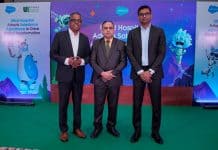As customers move toward software, SaaS, managed services, and cloud solutions, Cisco believes in evolving its partner’s ecosystems to help them increase their business agility, grow their market relevance, and reach their profitability goals. In an exclusive interview with CRN India, Pankaj Lulla, Director – Partner & Services, Cisco India and SAARC shares the renewed focus on channel business and directions for partners
Can you tell us the key highlights of the recently held Cisco’s Partner conclave? What are some of the directions shared with partners?
This time the theme for the digital partner conclave was “Future-Ready”. The reason to call that out it, that there are three things that are occurring, post-pandemic. There is a whole change in the customer buying behavior. IT spends are down. But technology buying has actually increased because of the digital acceleration that’s happening with our customers. That spend is not really led by IT. It’s led by business, which decides on the spending that is required. So the way for our partners or to engage with our customers needs to change completely. One, they need to understand the new business models that our customers are looking at. The second would be that they need to understand the different buying centers within the customer. Third, these customers want to consume technology very differently from the traditional way.
So instead of buying a hardware, software, and services model, most of these customers are also looking at managed services, annuity-based models, and consumption-based models and that transition is occurring. It’s not like the transition is overnight. But we have seen that the customer’s buying patterns are changing. So our partners need to be ready for it.
If you look at the Cisco strategy that we have recently called out, is around 3-4 strategic pillars:
The first is around being ready for the cloud. Now, this is something not many of our partners and customers really associate Cisco with, but we have a big play, both around our multi-cloud platforms like Intersight that we have recently announced. Intersight was largely a platform, more of a software tool for infrastructure management for our UCS.
The second area is the Future of Work. Now, we are seeing that a lot of organizations are actually going to have a hybrid workspace. The demand, both on the network, the security, as well as the data center, and employee experience is going to change because of this hybrid workspace. We have our own architecture which offers a singular policy for employees. We call DNAC – DNA Center, which can provide a lot of that flexibility of segmentation, insights, policy, and automation from a platform perspective.
The third area is Application experiences, both AppDynamics and ThousandEyes, which gives visibility within not only your application performance, but also your infrastructure performance, and how do you bring this together to define both on your intranet as well as internet – where an employee sitting at home.
Another area is end-to-end security. The transmission of security from on-prem to more cloud security. Those are the areas that are really growing for us. We’re seeing the areas like Cisco Umbrella, Cisco Duo as well as email cloud security really growing for us – like Stealthwatch. It still beginning for us, but a descriptive shift is occurring and how Cisco can help you secure from a cloud to your on-prem, to your edge to an employee’s desktop with endpoint security, is where Cisco is looking at end-to-end security.
How Cisco is building partners’ capability to understand the need to transform and perform with the changing dynamics of technology being delivered and consumed.
Currently, 98-99% of our business is through partners. The 2% where it is indirect, is largely where we work with the service providers, someone like a Bharti or Jio, even there it’s a very small part of the business where we do directly with them. So the whole aim is, how do you build your partner capability, and your ability for partners to understand the need to transform and perform.
We have nine platforms, including DNA center, Intersight, Nexus Dashboard, SecureX. We also have other platforms like AppDynamics. We want our partners to learn and get our customers to adopt. The big shift around is leading our partners with software, and all these platforms have software as the core of what they used to deliver. In the software journey, our partners need to understand how do we sell to customers, because 76% of our software globally is subscription software. So, the journey with our partners is that they have to be able to explain the value to our customers and then get our customers to adopt. Thus, the whole piece of selling, from maybe two years back from being a point sale, now transformed to a lifecycle sales motion that we need a partner to take. Between software and services, today globally as well as in India, close to 60% of our business comes from software plus services. Out of the total services, it’s over 70+ percent in India is on subscription and growing.
With technology becoming more consumption and subscription-based model. How are you ensure the lifecycle of the same as a growing model for partners?
Actually, this model is working across all segments. The only segment, I think there’s still work to be done is government. In fact, we see the biggest traction is with our commercial customers and small business customers. The area, which is a little slower, not like it’s not there in the public sector, where government and government agencies still prefer perpetual licensing. Here, it is more about education, and the ability as an industry that all of us are trying to do with, with the government as a customer, trying to tell them the value of a subscription. Because the value of subscription comes in, is that you are able to keep yourself updated to the current versions down the journey as it gets released.
Both, Cisco as well as partners, keep engaged with the customer through the lifecycle. Because it’s no longer a one-time sale. We build a practice with the customer to keep him on the latest, because then only when he’s using the maximum value out of the software, will he be ready to come in and renew with you. That’s the practice change we are driving with our partners.
From Hardware to software, service, and now lifecycle. How you align your partners with this new practice?
80% of our partners are selling software. They are moving with the time. They are very well imbibing in what we’re trying to do. I think the software journey they understand. Most of our partners are actually imbibing the lifecycle story – we call it customer success, which is a practice trying to build that – once we sell to a customer, how do we, along with the partners, work with them, that they help the customers to adopt and work with them through the lifecycle. So, we have partners who are actually working with us and building through the lifecycle story. Hence, we are seeing that shift that is occurring. Very clearly, it is not a challenge. It’s only the pace that how can we fasten it and get our partners ready through that change.
We are working with between 15 and 20 partners right now as they build a practice with us, which are our top partners that contribute close to about 60% of our business. And probably from the last one and a half years, they’re working on building the practice. The reason for this journey is because it’s not just about one technology. You start with the one technology and you start bringing in different technologies and the needs are different from different technologies.
Lastly, the new Cisco partner program recognizes our partner expertise and the value they bring to customers. Our new, unified framework consolidates existing programs and rewards our partner’s investments based on how they create and deliver this value to customers. Designed around the four primary roles that Cisco partners play with customers, the new Cisco partner program aligns their strengths and unique value drivers and addresses the fact that many of them play more than one role. Within each role, they can distinguish themselves as either a Select, Premier, or Gold partner. The four roles in the new Cisco partner program are Integrator, Provider, Developer, and Advisor.














